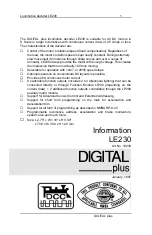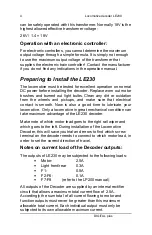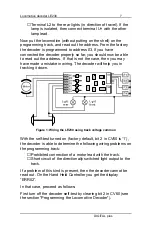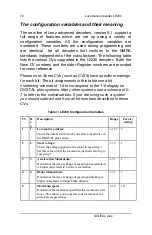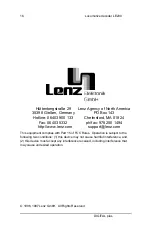
Locomotive decoder LE230
5
DIGITAL plus
Mathematically the sum of all the maximum currents is greater
than the allowable total current of 2.5A – this in order to allow
customized use of the decoder –, but even so this value must
never be surpassed in continued operation.
An example:
You need a motor output current of 1.5A for the operation of the
motor. You now calculate the current left available for the
function outputs by deducting the motor current from the total
current. In this case, there will only be 1.0A left for the functions.
If you now connect a lamp drawing 100mA to each of the two
outputs of the directional light function, then you have another
0.9A available for the other functions. If this is not enough for the
intended use, the you can use one or more Function Module
LF200. This module then provides you with isolated relay
contacts for switching the functions.
Installation Considerations
LE230 is equipped with numerous safety circuits, however no
part of the decoder may touch any metal part of the frame or
locomotive shell at any time. If they do, there will be a short
circuit inside the Locomotive Decoder and it will be destroyed.
Do not however wrap the Decoder in insulating tape, since
this will hinder the needed air circulation around the decoder.
Instead stick insulating tape, or similar, onto the metal parts of
the locomotive. This way you can prevent undesired short
circuits, without ‘choking’ the Decoder.
The motor connections must the isolated after removing the
previous wires. That means that there must be no connection to
the frame or wheels (wheel wipers) any longer. Also note that
such connections occasionally can happen when replacing
the shell onto the frame!
Locomotives equipped with LE230 must not be operated via
overhead wire (catenary) on 2 rail layouts, since the locomotive
can get twice the applied voltage if put on the track in the wrong
direction.
Plug-in terminal row S2 is intended exclusively for connection of
Power Module LP200. Power Module LP200 is used to control
additional motors whose total current needs exceed the current

